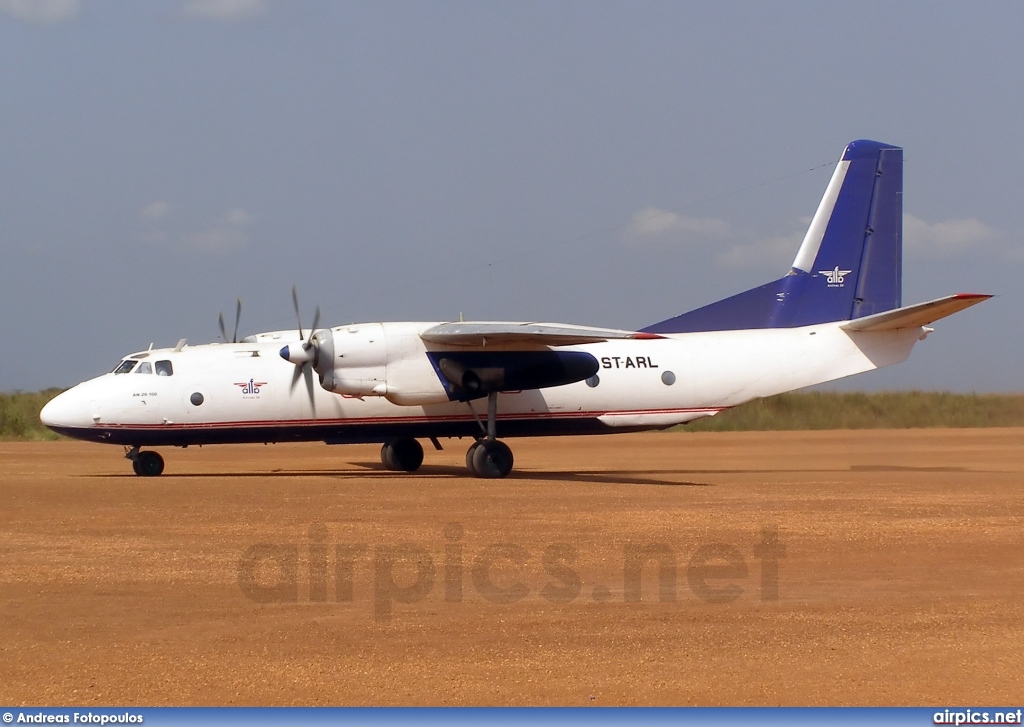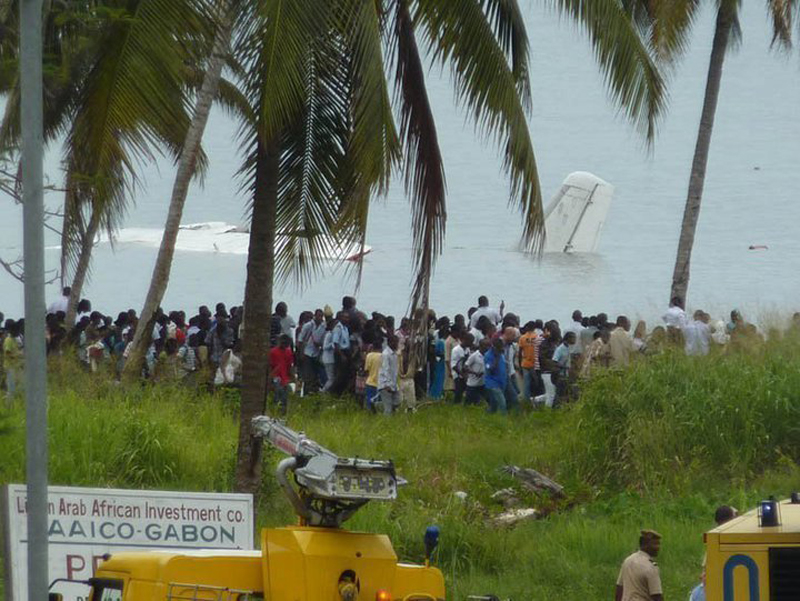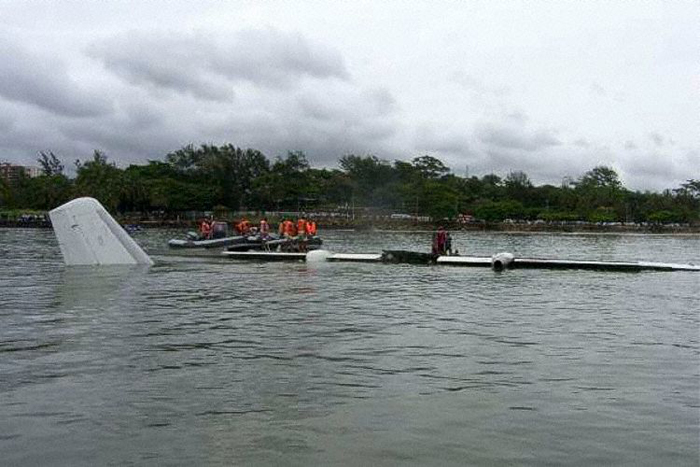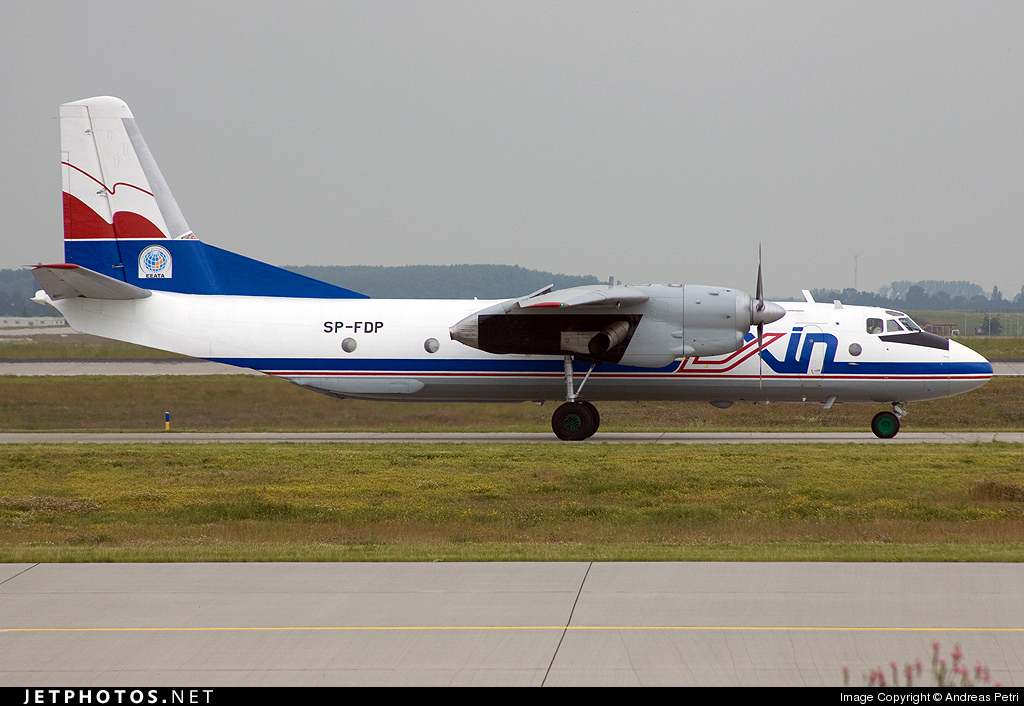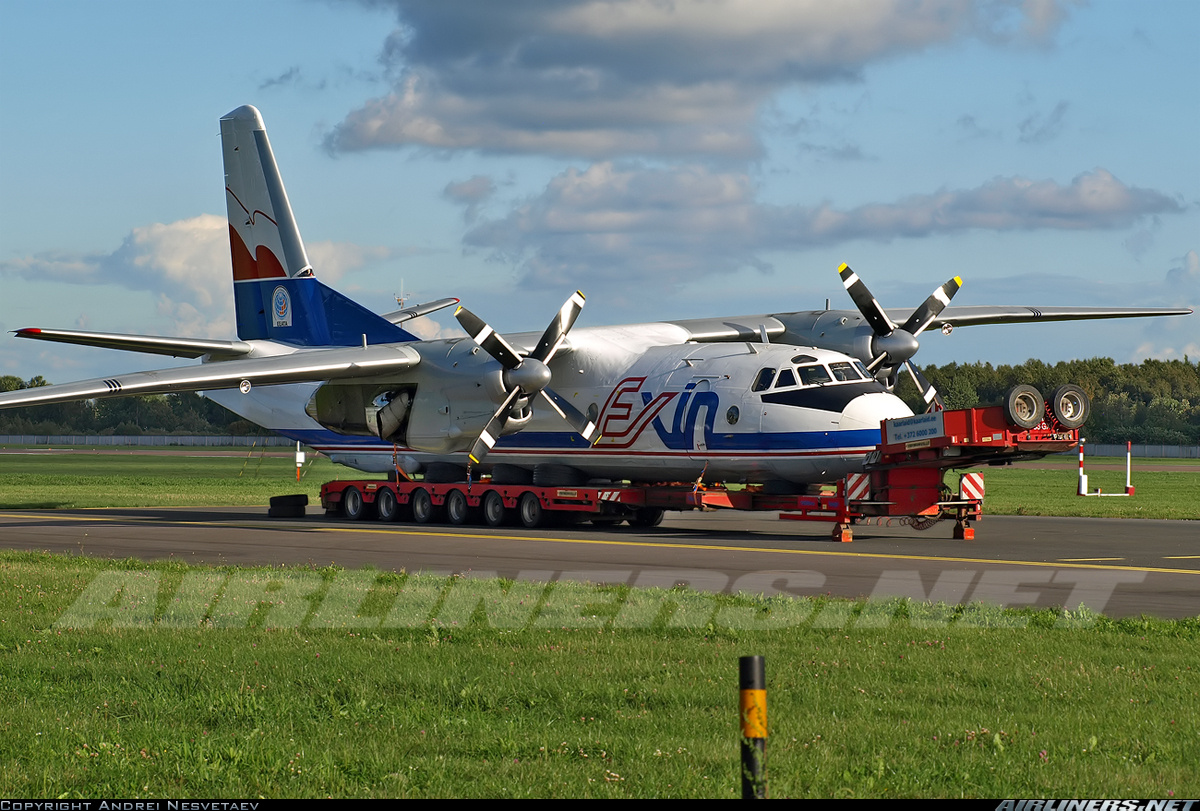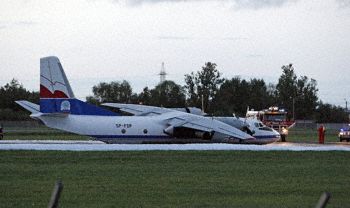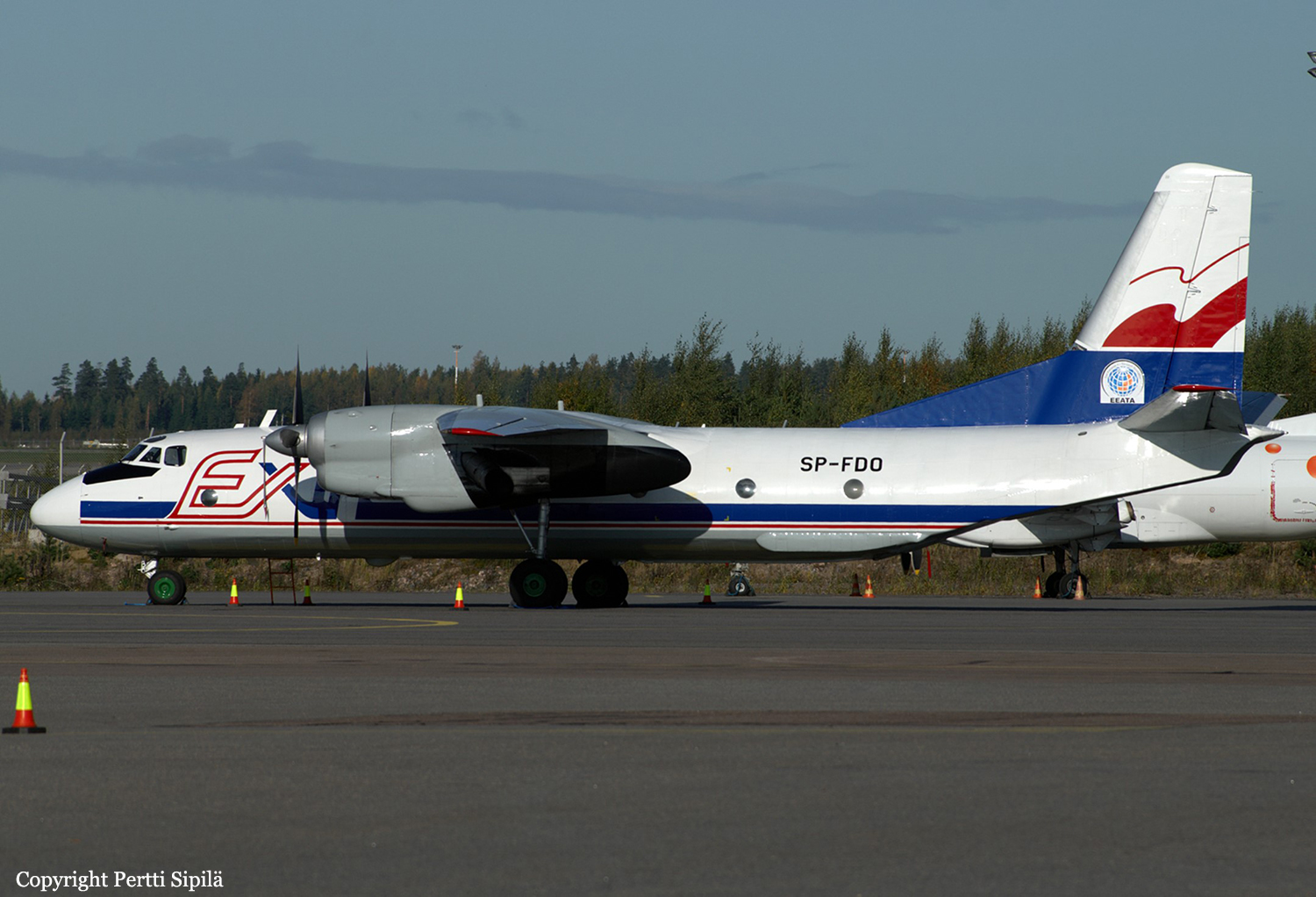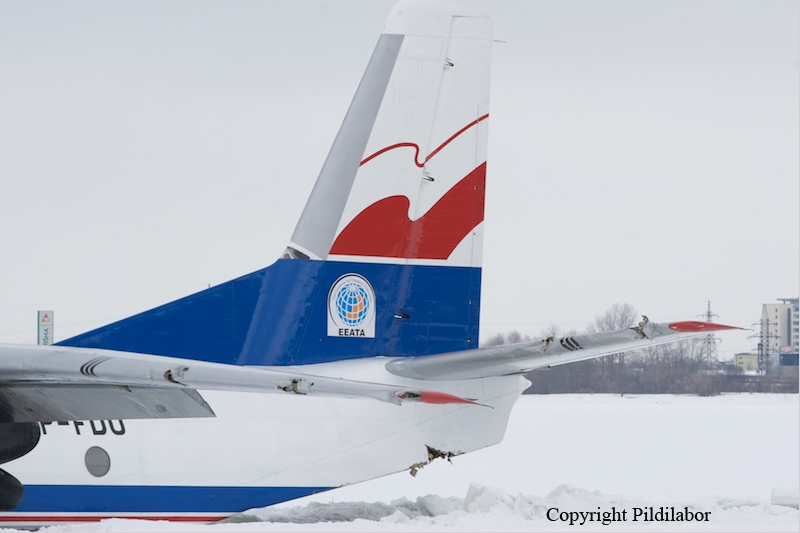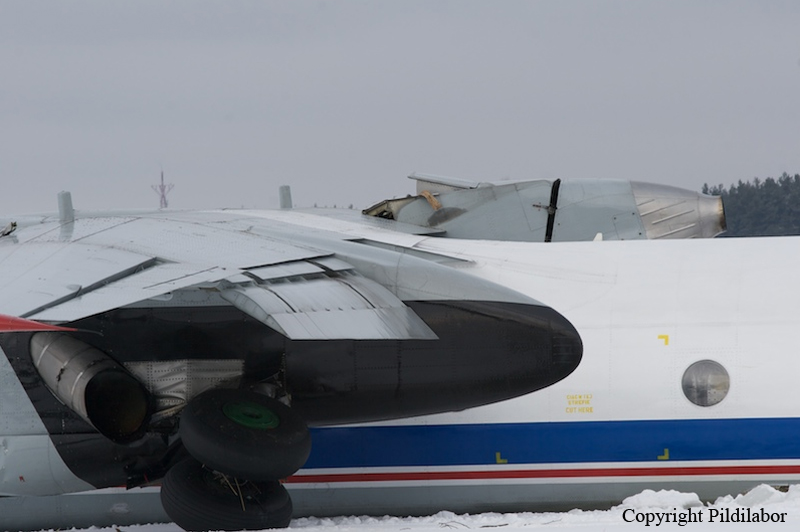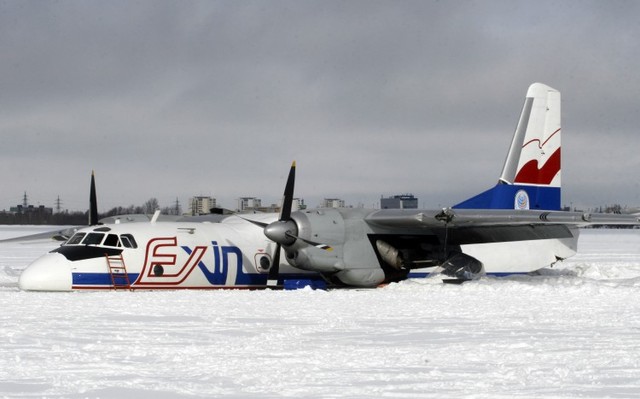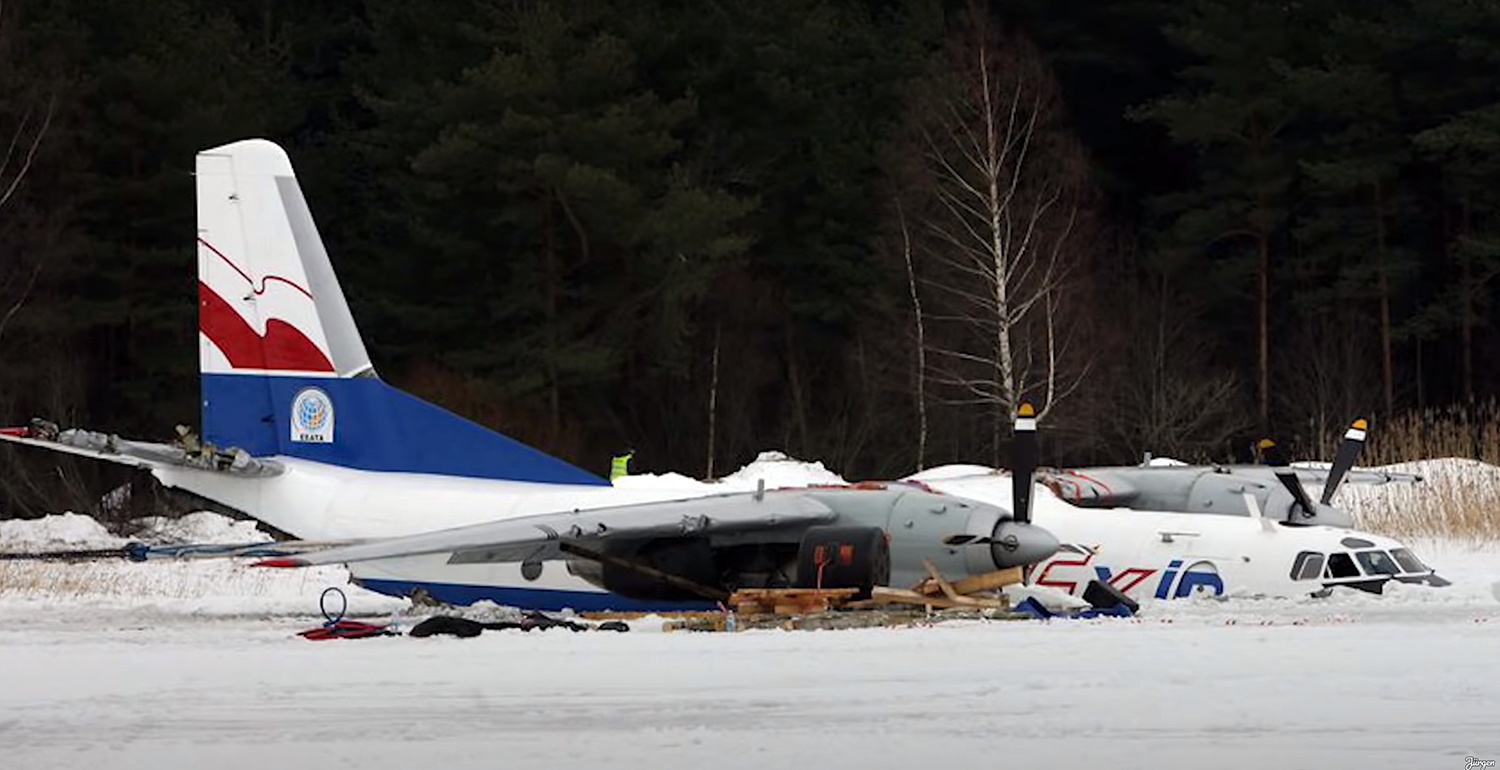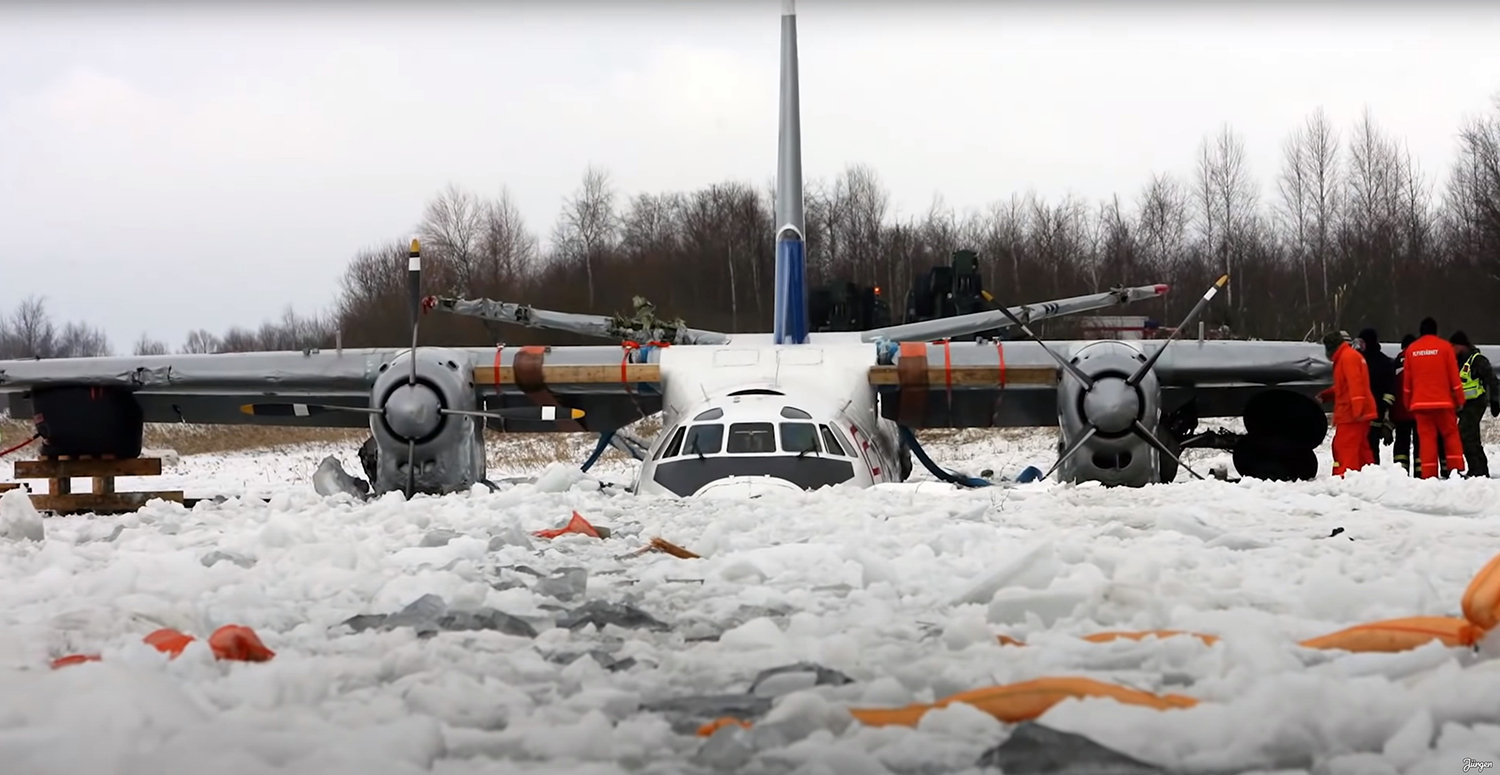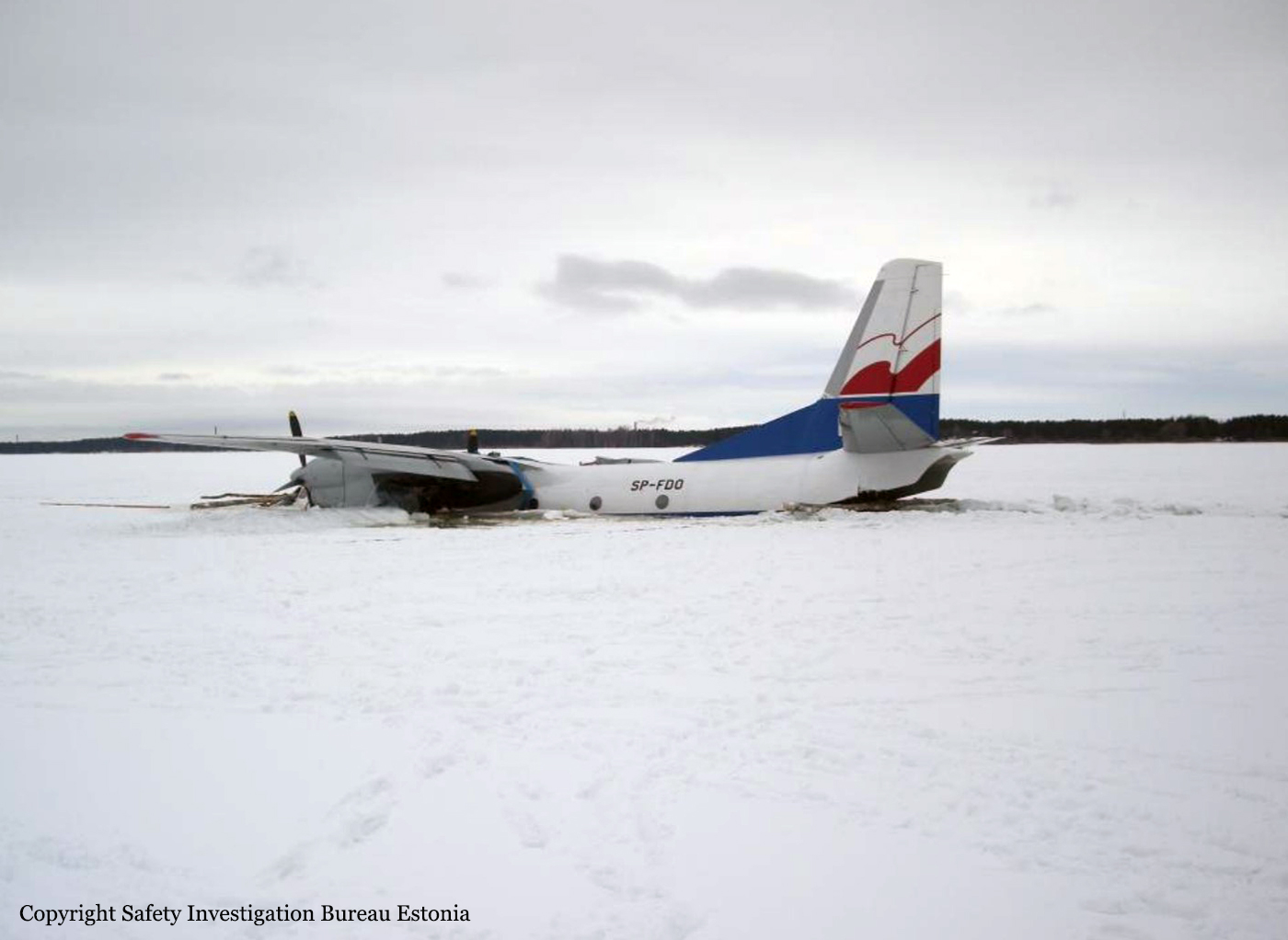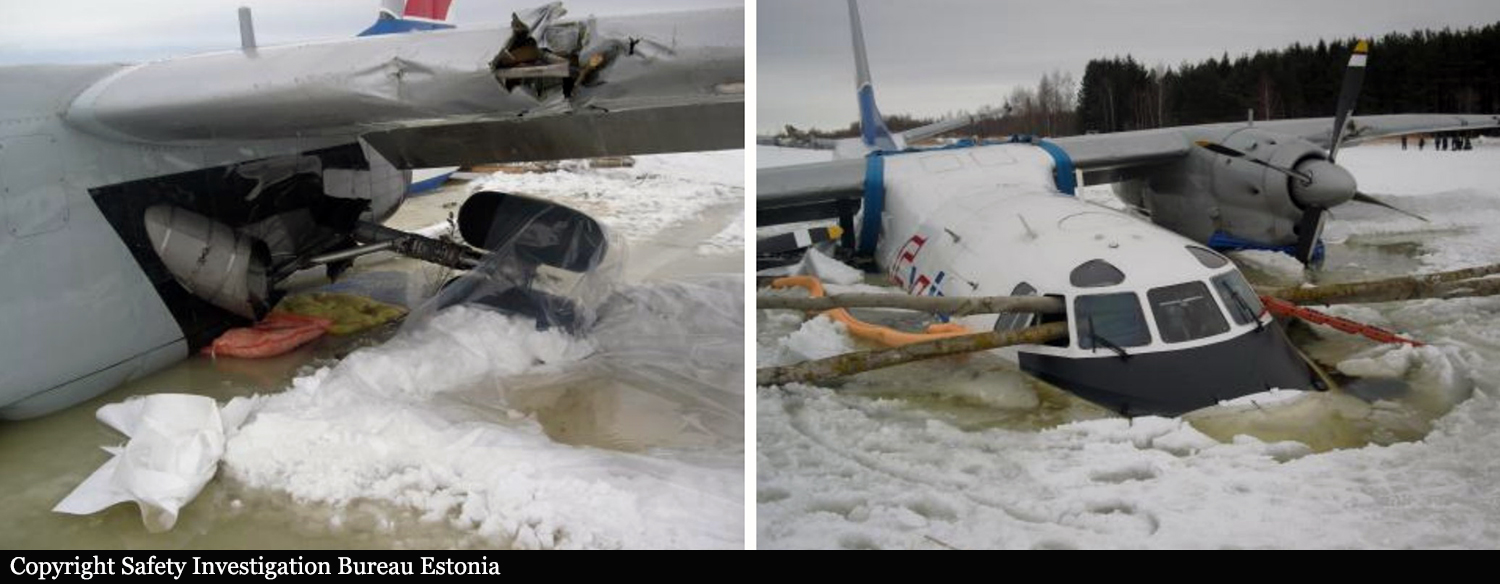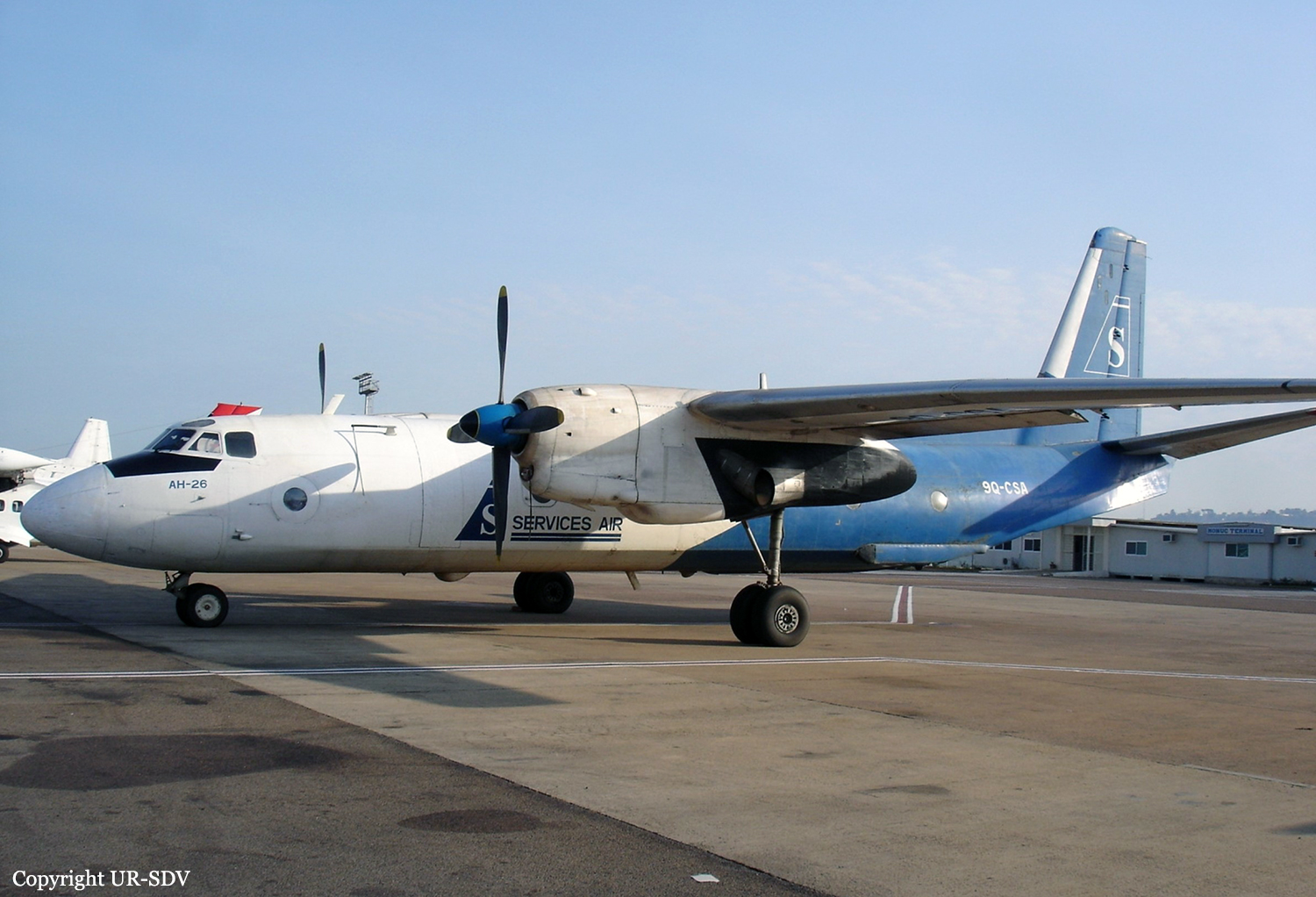Crash of an Antonov AN-26-100 in Talodi: 32 killed
Date & Time:
Aug 19, 2012 at 0800 LT
Registration:
ST-ARL
Survivors:
No
Schedule:
Khartoum - Talodi
MSN:
26 06
YOM:
1975
Crew on board:
6
Crew fatalities:
Pax on board:
26
Pax fatalities:
Other fatalities:
Total fatalities:
32
Circumstances:
The aircraft was performing a flight from Khartoum to Talodi with a delegation of 26 members of the Sudanese Government, among them several Ministers, Generals and politicians. On approach to Talodi Airport in poor weather conditions due to a sand storm, the crew initiated a go-around procedure when the aircraft impacted the slope of Mt Hagar al Nar (244 metres high) located 1,500 metres south of the airport. The aircraft was destroyed by impact forces and a post crash fire and all 32 occupants were killed.
The official list of the passengers and crew, all of whom died in the crash, is as follows:
Guidance and Religious Endowments Minister Ghazi al-Sadiq Abdel Rahim,
Justice Party chairman Makki Ali Balayil,
State minister at the Youth and Sports Ministry Mahjub Abdel Rahim Tutu,
State minister at the Ministry of Tourism, Antiquities and Wildlife Issa Daifallah,
Maj. Gen. Salah Ismail – Air Forces
Maj. Gen. Ahmed Musa Ahmed – the Police Forces
Maj. Gen. Ahmed Al-Tayeb Abu-Guroon – Security and Intelligence Organ
Brigadier Lugman Omer – Second Commander of the People's Defence Forces
Al-Saddiq Abdul-Majid Al-Makkawi – the People's Defence Forces
Awadal-Karim Siral-Khatim – Deputy Coordinator of the People's Defence Forces
Waeez Salaha Omer – Headquarters of the People's Defence Forces
Omer Mahjoub Ahmed – Deputy Coordinator of the People's Defence Forces
Salah-Eddin Mustafa – People's Defence Forces – Jabal Aulia Locality
Several officials from Khartoum (including Hamid Al-Aghbash – the National Assembly)
Five media representatives
Six crew members.
The official list of the passengers and crew, all of whom died in the crash, is as follows:
Guidance and Religious Endowments Minister Ghazi al-Sadiq Abdel Rahim,
Justice Party chairman Makki Ali Balayil,
State minister at the Youth and Sports Ministry Mahjub Abdel Rahim Tutu,
State minister at the Ministry of Tourism, Antiquities and Wildlife Issa Daifallah,
Maj. Gen. Salah Ismail – Air Forces
Maj. Gen. Ahmed Musa Ahmed – the Police Forces
Maj. Gen. Ahmed Al-Tayeb Abu-Guroon – Security and Intelligence Organ
Brigadier Lugman Omer – Second Commander of the People's Defence Forces
Al-Saddiq Abdul-Majid Al-Makkawi – the People's Defence Forces
Awadal-Karim Siral-Khatim – Deputy Coordinator of the People's Defence Forces
Waeez Salaha Omer – Headquarters of the People's Defence Forces
Omer Mahjoub Ahmed – Deputy Coordinator of the People's Defence Forces
Salah-Eddin Mustafa – People's Defence Forces – Jabal Aulia Locality
Several officials from Khartoum (including Hamid Al-Aghbash – the National Assembly)
Five media representatives
Six crew members.
Probable cause:
Despite the fact that rebels announced officially two days later they shot down the aircraft, the Sudanese Government confirmed that visibility was low at the time of the accident with clouds at low height and poor weather conditions. As a result, officials said the accident was the consequence of a controlled flight into terrain (CFIT) after the crew descended too low on final.
